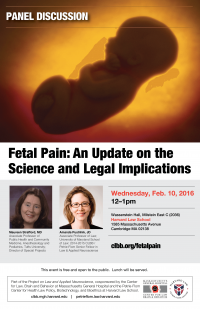By Barack Obama | The Washington Post | January 25, 2016
In 2010, a 16-year-old named Kalief Browder from the Bronx was accused of stealing a backpack. He was sent to Rikers Island to await trial, where he reportedly endured unspeakable violence at the hands of inmates and guards — and spent nearly two years in solitary confinement.
In 2013, Kalief was released, having never stood trial. He completed a successful semester at Bronx Community College. But life was a constant struggle to recover from the trauma of being locked up alone for 23 hours a day. One Saturday, he committed suicide at home. He was just 22 years old.
Solitary confinement gained popularity in the United States in the early 1800s, and the rationale for its use has varied over time. Today, it’s increasingly overused on people such as Kalief, with heartbreaking results — which is why my administration is taking steps to address this problem.
There are as many as 100,000 people held in solitary confinement in U.S. prisons — including juveniles and people with mental illnesses. As many as 25,000 inmates are serving months, even years of their sentences alone in a tiny cell, with almost no human contact.
Research suggests that solitary confinement has the potential to lead to devastating, lasting psychological consequences. It has been linked to depression, alienation, withdrawal, a reduced ability to interact with others and the potential for violent behavior. Some studies indicate that it can worsen existing mental illnesses and even trigger new ones. Prisoners in solitary are more likely to commit suicide, especially juveniles and people with mental illnesses.
The United States is a nation of second chances, but the experience of solitary confinement too often undercuts that second chance. Those who do make it out often have trouble holding down jobs, reuniting with family and becoming productive members of society. Imagine having served your time and then being unable to hand change over to a customer or look your wife in the eye or hug your children.
As president, my most important job is to keep the American people safe. And since I took office, overall crime rates have decreased by more than 15 percent. In our criminal justice system, the punishment should fit the crime — and those who have served their time should leave prison ready to become productive members of society. How can we subject prisoners to unnecessary solitary confinement, knowing its effects, and then expect them to return to our communities as whole people? It doesn’t make us safer. It’s an affront to our common humanity.
That’s why last summer, I directed Attorney General Loretta E. Lynch and the Justice Department to review the overuse of solitary confinement across U.S. prisons. They found that there are circumstances when solitary is a necessary tool, such as when certain prisoners must be isolated for their own protection or in order to protect staff and other inmates. In those cases, the practice should be limited, applied with constraints and used only as a measure of last resort. They have identified common-sense principles that should guide the use of solitary confinement in our criminal justice system.
The Justice Department has completed its review, and I am adopting its recommendations to reform the federal prison system. These include banning solitary confinement for juveniles and as a response to low-level infractions, expanding treatment for the mentally ill and increasing the amount of time inmates in solitary can spend outside of their cells. These steps will affect some 10,000 federal prisoners held in solitary confinement — and hopefully serve as a model for state and local corrections systems. And I will direct all relevant federal agencies to review these principles and report back to me with a plan to address their use of solitary confinement.
States that have led the way are already seeing positive results. Colorado cut the number of people in solitary confinement, and assaults against staff are the lowest they’ve been since 2006. New Mexico implemented reforms and has seen a drop in solitary confinement, with more prisoners engaging in promising rehabilitation programs. And since 2012, federal prisons have cut the use of solitary confinement by 25 percent and significantly reduced assaults on staff.
Reforming solitary confinement is just one part of a broader bipartisan push for criminal justice reform. Every year, we spend $80 billion to keep 2.2 million people incarcerated. Many criminals belong behind bars. But too many others, especially nonviolent drug offenders, are serving unnecessarily long sentences. That’s why members of Congress in both parties are pushing for change, from reforming sentencing laws to expanding reentry programs to give those who have paid their debt to society the tools they need to become productive members of their communities. And I hope they will send me legislation as soon as possible that makes our criminal justice system smarter, fairer, less expensive and more effective.
In America, we believe in redemption. We believe, in the words of Pope Francis, that “every human person is endowed with an inalienable dignity, and society can only benefit from the rehabilitation of those convicted of crimes.” We believe that when people make mistakes, they deserve the opportunity to remake their lives. And if we can give them the hope of a better future, and a way to get back on their feet, then we will leave our children with a country that is safer, stronger and worthy of our highest ideals.
Barack Obama is president of the United States.
Read the entire op-ed, published in The Washington Post.




